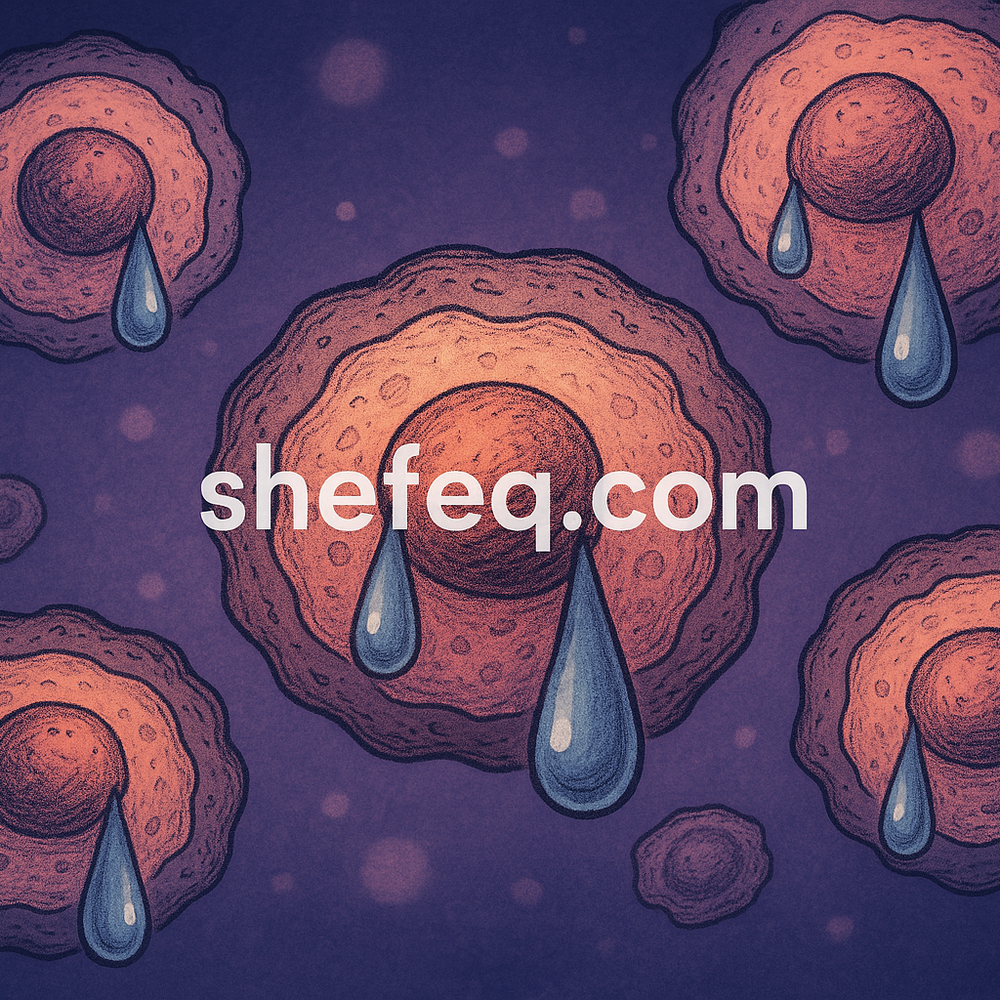S – Social Perspective: Aging—Not Just the Weight of Years, but of Cells
When a person ages, it's not the mirror or the calendar that first senses it. The initial warning comes from the cells. The body remains silent, but the cells quietly "cry." Every day, millions of cells die; some regenerate, while others can no longer divide as they once did. This silent decline is not a poetic but a biological sign of aging.
In society, aging is often measured by external changes: gray hair, wrinkles, fatigue. However, internal changes occur earlier and run deeper. Cells respond silently to stress, poor nutrition, late nights, intense emotions, inactivity, and air pollution. If they could speak, they might say:
-
"Your tension prevents us from dividing."
-
"Instead of being repaired, we quietly abandon you."
-
"Our lifespan is as short as your choices."
These are the silent confessions of aging—each cell in our body takes another step down this path as we live through this process.
A – Academic Perspective: What Is Cellular Aging?
At the cellular level, aging is linked to the gradual weakening of the biological clock. The main factors governing this process include:
-
Telomere Shortening
Each time a cell divides, the telomeres at the ends of its chromosomes shorten slightly. When telomeres are completely lost, the cell can no longer divide—marking the onset of cellular aging. The enzyme "telomerase," which protects telomeres, is active only in certain cells (e.g., stem cells). -
Oxidative Stress
Toxins from the environment, smoking, poor air quality, radiation, and unhealthy diets produce free radicals that damage cellular DNA. This damage leads to the cell's self-repair or "suicide" (apoptosis). -
Mitochondrial Decline
Mitochondria, the "energy factories" of the cell, lose efficiency with age, reducing energy production and slowing cellular functions. This results in fatigue, weakened immunity, and diminished muscle response. -
Stem Cell Depletion
Stem cells, which renew other cells in the body, diminish or lose function with age. Consequently, wound healing slows, organs weaken, and skin elasticity decreases. -
Epigenetic Changes
While the genes within a cell don't change with age, their expression does. Some genes become silent, while others become overactive. This leads to increased cancer risk and functional tissue disorders.
In essence, cells don't just age—they become less hopeful.
I – Societal Perspective: Society's Approach to Aging and the Myth of Youth
Society often views aging as an undesirable phase, a loss of youth. This perspective distances individuals from the internal aging process. People buy creams to eliminate wrinkles but neglect lifestyles that could halt cellular aging.
Additionally:
-
Ageism: Older individuals are frequently labeled as "obsolete" or "outdated." Yet, the processes occurring in their bodies are evidence of rich experience and a prolonged biological struggle.
-
Pressure from Aesthetic Centers: Youth is presented as a social value, prompting people to view aging as a flaw.
-
Neglect of Healthy Aging Models: Aging should be accepted not as a disease but as a model of balanced aging.
If society understands that aging isn't solely about physical appearance, cells wouldn't need to cry. With love, care, proper nutrition, and movement, they remain silent—without complaint.
T – Research Perspective: Strategies to Combat Cellular Aging
Science and technology have made significant strides in studying the aging process. Now, methods that induce changes within the cell itself are being explored:
-
Senolytic Drugs
These drugs target and eliminate aged, non-functional cells (senescent cells) accumulated in the body, potentially rejuvenating tissues and improving organ function. -
Increasing NAD+ Levels
Nicotinamide adenine dinucleotide (NAD+) plays a crucial role in cellular energy balance. Its levels decrease with age. Supplements that boost NAD+ can restore energy production and repair capabilities in cells. -
Telomerase Activators
Molecules aimed at extending telomeres (e.g., TA-65) have shown promising results in maintaining cell division and youthful functionality. -
Reading the Epigenetic Clock
Scientists have developed methods to determine a person's epigenetic age. These methods assess the rate of aging and help design personalized anti-aging programs. -
Autophagy and Intermittent Fasting
Autophagy, the cell's self-cleaning process, plays a vital role in eliminating harmful elements. Methods like 16/8 or 24-hour intermittent fasting promote autophagy, aiding in preventing aging.
Conclusion: To Prevent Cells from Crying—Embrace Age, Befriend Your Body
Aging isn't solely marked by the calendar. Changes at the cellular level script the true narrative of silent aging. Cells don't speak, but they have desires:
-
Clean air
-
Quality sleep
-
A diet rich in vegetables
-
Physical activity
-
A life free from stress
-
Emotional balance
-
Meaningful relationships
If we fulfill these desires, they remain silent. They don't cry. They live without aging.
Because aging isn't a misfortune; it's the price of the service our cells provide us. When we accept this price with love, aging isn't frightening—it's genuine.

